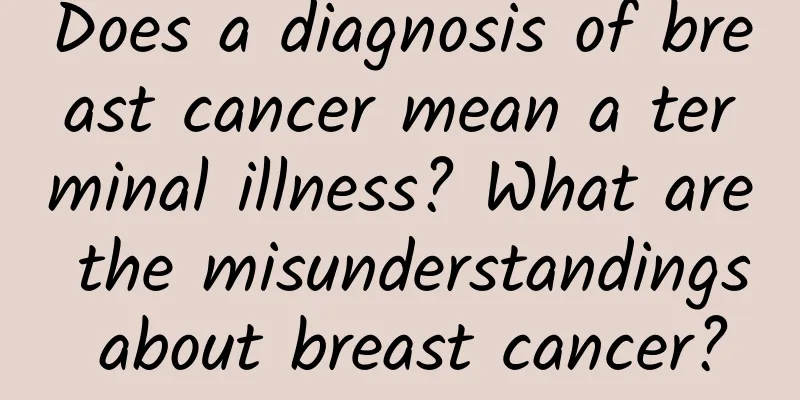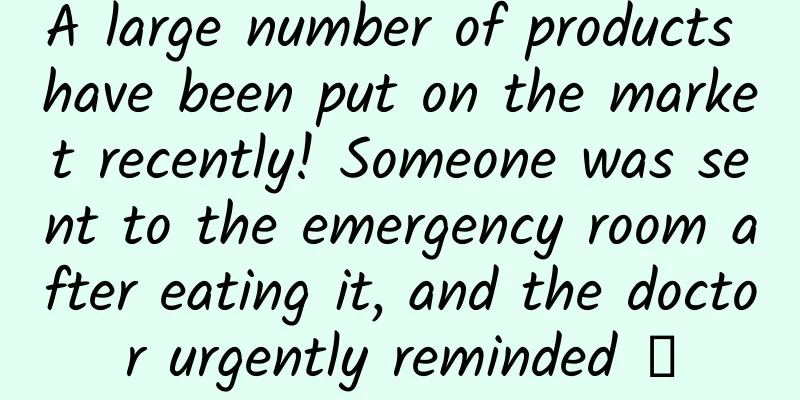Recurrent respiratory tract infections, beware of primary ciliary dyskinesia!

|
Author: Xu Baoping, Chief Physician, National Children's Medical Center, Beijing Children's Hospital, Capital Medical University Reviewer: Ma Mingsheng, deputy chief physician, Peking Union Medical College Hospital There is a disease that may only occur in one out of tens of thousands of people in ordinary areas, but may occur in one out of more than 2,000 people in areas with close relatives marrying. This disease is primary ciliary dyskinesia. 1. What is primary ciliary dyskinesia? Primary ciliary dyskinesia is a genetic disease, most of which are autosomal recessive. It is a group of diseases caused by abnormalities in the structure or function of cilia. The reason why it is called a series is that multiple systems will be affected, but the most common is the respiratory system, which is mainly manifested by repeated infections of the upper and lower respiratory tract, including sinusitis, tracheitis, bronchitis, pneumonia, followed by bronchiectasis, respiratory failure, etc. Figure 1 Original copyright image, no permission to reprint Because cilia are hair-like organelles with a very wide distribution range, but the most common site of distribution is the respiratory epithelium, the respiratory system is the most seriously affected. In addition to the clinical manifestations of the respiratory system, there are also manifestations of other systems. For example, some children may have hearing problems, eye problems, hydrocephalus, etc.; because there are cilia on the fallopian tubes, it can also cause female infertility or ectopic pregnancy; in addition, sperm also has flagella and can move. If the flagella move abnormally, it will cause male infertility; these are all clinical manifestations of primary ciliary dyskinesia. 2. Why do children with primary ciliary dyskinesia suffer from recurrent respiratory tract infections? The main reason is the abnormal function of respiratory cilia. The main function of respiratory cilia is to promote the movement of the mucus blanket on it, thereby expelling foreign particles, pathogenic microorganisms, necrotic and detached cells, sputum, etc. that are inhaled into the body. When the respiratory cilia function abnormally, these substances cannot be expelled and accumulate in the respiratory tract, blocking the airway and causing infection. This is the reason why children with primary ciliary dyskinesia have repeated respiratory infections. This persistent or recurrent infection can cause an inflammatory response, further aggravating damage to the cilia, creating a vicious cycle in which symptoms gradually worsen. 3. How to diagnose primary ciliary dyskinesia? First, repeated or persistent lower respiratory tract infections, such as recurrent bronchitis, pneumonia, bronchiectasis, atelectasis, etc. Second, recurrent or persistent sinusitis. Third, total situs inversus or dextrocardia. Fourth, unexplained breathing difficulties and respiratory distress occur in the full-term neonatal period. When the above clinical manifestations occur, primary ciliary dyskinesia should be considered. The measurement of nasal exhaled nitric oxide (nNO) is a screening test. Patients with primary ciliary dyskinesia have decreased nNO, but they need to be differentiated from other diseases that cause decreased nNO. Transmission electron microscopy is the gold standard for diagnosing primary ciliary dyskinesia. Abnormalities in the ultrastructure of cilia can be seen under the electron microscope. Genetic testing is also available and is becoming more and more common. However, it is expensive and about 30% of patients with primary ciliary dyskinesia do not have genetic abnormalities. There are some laboratories in China that can perform ciliary function tests. 4. How to treat primary ciliary dyskinesia? For this disease, the most important thing is symptomatic treatment. The so-called symptomatic treatment is mainly to keep the airways open and reduce respiratory infections, so expectorant treatment is a very important treatment. In addition, even if you try to prevent respiratory infections, it is difficult for patients with primary ciliary dyskinesia to avoid them completely. Once an infection occurs, anti-infection treatment is required. However, anti-infection treatment does not necessarily require the use of antibacterial drugs, and the treatment plan needs to be selected according to the pathogen of the infection. In addition, it does not need to be used for a long time, and is generally only used when respiratory symptoms worsen. If other problems arise, symptomatic treatment is also required. |
>>: How to help children with primary ciliary dyskinesia to pass sputum?
Recommend
What kind of cranberry is it? What kind of cranberry is good?
Cranberry, also known as cranberry, can be eaten ...
Can I take anti-inflammatory drugs during menstruation? Gynecologists are here to answer!
Women have their period for a few days every mont...
What to do about contact vaginal bleeding
As we all know, female vaginal bleeding usually o...
Can drinking tea and coffee help you lose weight and be healthy?
With the arrival of summer and the gradual rise i...
What is the difference between concealer and BB cream? Tips on how to use concealer and BB cream
The weather has been quite hot recently, and make...
What's wrong with menstruation?
Menstrual irregularities are something that many ...
Smelly discharge after menstruation
If a woman's secretions have an odor after me...
Abdominal pain on the first day of period
In fact, many women suffer from dysmenorrhea. Esp...
How many horizontal and vertical rows are there in the periodic table? Where is sulfur located in the periodic table?
The periodic table of chemical elements is widely...
What if I don't have my period after having an abortion?
Unexpected pregnancy? Many friends will choose ab...
The more you eat, the higher your blood sugar level? Beware of these "pseudo-whole grains"
In recent years, as the concept of healthy eating...
The role of powder
There are many things that women need to use when...
What is gynecological adenomyosis?
What's the matter with nodules in the lungs? ...
Why is there a black belt?
For women, under normal circumstances, the amount...









